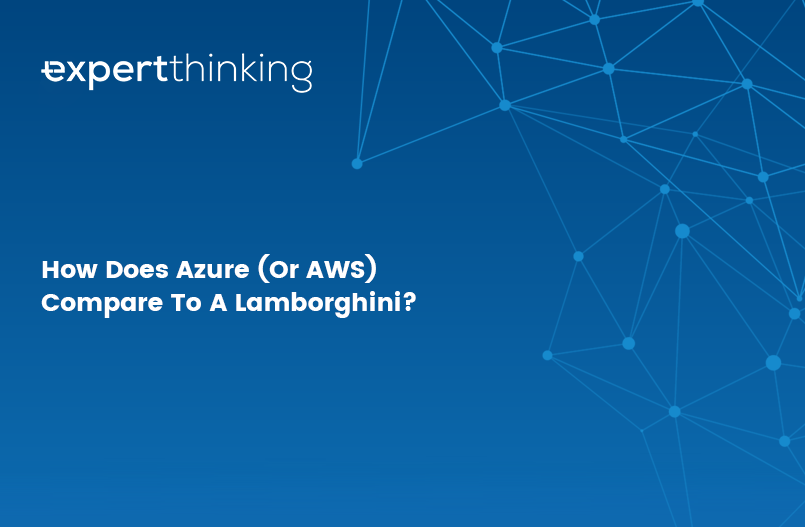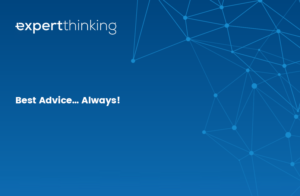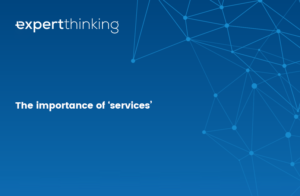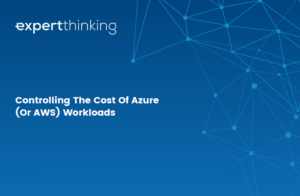Imagine you have just bought a Lamborghini. But you’re used to driving a Ford Fiesta. You cannot expect to jump in the driving seat and race away. The drives are wildly different. Polar opposites. Not only would you be disappointed with the results, but you’d also be running the risk you may damage the Lambo, and you’d be putting your life (and the lives of others) at risk.
This week we were explaining to a soon-to-be customer what Expert Thinking brings to the table, and why they need to supplement their team with our subject matter experts. We used this analogy to explain the difference between cloud (the Lamborghini) and traditional, legacy, on-premise technologies (thee Ford Fiesta), and why moving to the cloud is like driving a Lamborghini for the first time and how important it is to get expert “tuition” to adapt your driving style and be able to handle to the power of a high-performance sports car (aka the cloud).
By leveraging our subject matter expertise, our customers:
- Make the absolute most of their investment in Azure or AWS
- Realise the benefits quicker
- Spend less money on implementation and operation
- Be assured the design and build will be secure, compliant, performant, scalable, available and extensible, fit-for-purpose and aligned with best practice
- Avoid the many pitfalls often experienced by less experienced teams
Simply put, our experience not only accelerates return on investment but also helps avoid the many pitfalls associated with the adoption of cloud technologies.
Our customers benefit from a team of industry-certified cloud experts with considerable real-world experience using industry recognised best practice and our Well-Architected Framework (enhanced from Microsoft and Amazon’s own) comprising six pillars of excellence:
- Operational excellence: Run and monitor systems to deliver business value and to continually improve supporting processes and procedures.
- Built-in quality: Create high-quality, well-designed solutions that support current and future business needs.
- Secure: Protect information, systems, and assets while delivering business value through risk assessments and mitigation strategies.
- Reliable: Dynamically acquire computing resources to meet demand, mitigate disruptions such as misconfigurations or transient network issues, and automatic system recovery from infrastructure or service disruptions.
- Efficient: Optimise use of computing resources to meet workloads, and to maintain that efficiency as demand changes and technologies evolve.




